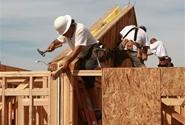Analysis

March 1, 2016
Construction Spending Posts Strong Month and Year Advances
Written by Sandy Williams
Construction spending soared in January from a month earlier and all major segments posted hefty year-over-year gains, pushing the total to the highest level since October 2008, according to an analysis by the Associated General Contractors of America. Association officials said the new spending figures indicate that demand for construction remains robust amid broader economic concerns.
“There were solid gains for both the month and year in apartment, nonresidential and highway construction,” said Ken Simonson, the association’s chief economist. “Although favorable weather may have boosted these results, demand for many types of projects remains strong despite worries that the overall economy has slowed.”
Construction spending in January totaled $1.141 trillion at a seasonally adjusted annual rate, 1.5 percent higher than the upwardly revised December total and 10.4 percent higher than in January 2015, Simonson said. Private residential spending was flat for the month but increased 7.7 percent compared to January 2015. Spending on multifamily residential construction jumped 2.6 percent for the month and 30 percent year-over-year, while single-family spending dipped 0.2 percent from December but rose 6.6 percent compared to January 2015.
Private nonresidential construction spending increased 1.0 percent for the month and 11.5 percent from a year earlier. Simonson observed that nearly every segment increased from 12 months before. The largest private nonresidential segment in January was manufacturing construction, which rose 4.2 percent for the month and 11.0 percent year-over-year. The next-largest segment, power (including oil and gas pipelines), gained 2.7 percent and 10.3 percent, respectively.
Public construction spending increased 4.5 percent from a month before and 13.0 percent from 12 months earlier. The biggest public segment—highway and street construction—leaped 15 percent for the month and 34 percent year-over-year, as record warmth in January 2016 allowed projects to proceed that would normally have been deferred until spring in some regions, Simonson noted.
Association officials said the new construction spending figures underscore the need to address growing construction workforce shortages that are making it difficult for many firms to add new staff. They called on elected and appointed officials to act on the measures outlined in the association’s workforce development plan, including making it easier for high schools to set up construction-specific education programs.
“Growing demand for construction is only helpful if firms have enough workers to perform the work,” said Stephen E. Sandherr, the association’s chief executive officer. “Without a better pipeline for recruiting and preparing new workers, will have difficulty completing projects on time because they don’t have enough workers on staff.”







